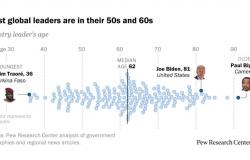- Tuesday’s highlight was the US Bureau of Labor Statistics reporting on strong JOLT’s Job Openings figures for February.
- Markets await additional data to guide easing cycle expectations, widely expected to begin in June.
- Events on the horizon this week include Nonfarm Payrolls, Average Hourly Earnings, and Unemployment rate.
The US Dollar Index (DXY) trades at 104.95 with mild losses. The Federal Reserve (Fed) and economic data are giving signals of a solid US economy, which made markets back off on being fully confident of a June rate cut. Labor data this week will continue modeling those expectations.
The US economy remains resilient as the Federal Reserve adopts a cautious approach under the leadership of Powell. Despite forecasts indicating higher inflation, the Fed is avoiding drastic reactions to temporary price spikes. The potential beginning of a monetary easing phase in June is contingent upon future economic data. Several Fed speakers will be on the wires on Tuesday.
Daily digest market movers: DXY loses ground despite strong labor data
- The Bureau of Labor Statistics (BLS) in the US published the Job Openings and Labor Turnover Survey (JOLTS) for February, which showed 8.75M job openings.
- This figure surpassed January’s adjusted count of 8.74M and overtook the market expectation of 8.74M.
- Fed’s Daly confirmed on Tuesday and three rate cuts in 2024 seem “reasonable”, which seems to add pressure on the Greenback.
- As for now, the market foresees a 63% probability of the first 25 bps rate cut in June, which is still contingent on incoming data.
- US Treasury bond yields are mixed on Tuesday with the 2-year yield at 4.70%, indicating a slight downward movement. In contrast, 5 and 10-year yields at 4.34% and 4.36%, respectively, show minor increases.
- Nonfarm Payrolls, Average Hourly Earnings, and Unemployment Rate data will dictate the pace of expectations and the US Dollar for the short term.
DXY technical analysis: DXY bulls take a breather but retain control
On the daily chart, the Relative Strength Index (RSI) is on a negative slope, although still in positive territory, implying a possible weakening of buying momentum. This may be a hint that the bulls are taking a breather at this point after driving the index to its highest level since mid-February. The Moving Average Convergence Divergence (MACD) shows decreasing green bars, further indicating that the bullish momentum seems to be losing steam.
Despite showing a negative outlook in the short term, the pair is operating above its 20, 100, and 200-day Simple Moving Averages (SMAs). This suggests that the overall trend remains predominantly bullish.
Nonfarm Payroll FAQs
Nonfarm Payrolls (NFP) are part of the US Bureau of Labor Statistics monthly jobs report. The Nonfarm Payrolls component specifically measures the change in the number of people employed in the US during the previous month, excluding the farming industry.
The Nonfarm Payrolls figure can influence the decisions of the Federal Reserve by providing a measure of how successfully the Fed is meeting its mandate of fostering full employment and 2% inflation. A relatively high NFP figure means more people are in employment, earning more money and therefore probably spending more. A relatively low Nonfarm Payrolls’ result, on the either hand, could mean people are struggling to find work. The Fed will typically raise interest rates to combat high inflation triggered by low unemployment, and lower them to stimulate a stagnant labor market.
Nonfarm Payrolls generally have a positive correlation with the US Dollar. This means when payrolls’ figures come out higher-than-expected the USD tends to rally and vice versa when they are lower. NFPs influence the US Dollar by virtue of their impact on inflation, monetary policy expectations and interest rates. A higher NFP usually means the Federal Reserve will be more tight in its monetary policy, supporting the USD.
Nonfarm Payrolls are generally negatively correlated with the price of Gold. This means a higher-than-expected payrolls’ figure will have a depressing effect on the Gold price and vice versa. Higher NFP generally has a positive effect on the value of the USD, and like most major commodities Gold is priced in US Dollars. If the USD gains in value, therefore, it requires less Dollars to buy an ounce of Gold. Also, higher interest rates (typically helped by higher NFPs) also lessen the attractiveness of Gold as an investment compared to staying in cash, where the money will at least earn interest.
Nonfarm Payrolls is only one component within a bigger jobs report and it can be overshadowed by the other components. At times, when NFP comes out higher-than-forecast, but the Average Weekly Earnings is lower than expected, the market has ignored the potentially inflationary effect of the headline result and interpreted the fall in earnings as deflationary. The Participation Rate and the Average Weekly Hours components can also influence the market reaction, but only in rare events like the “Great Resignation” or the Global Financial Crisis.






